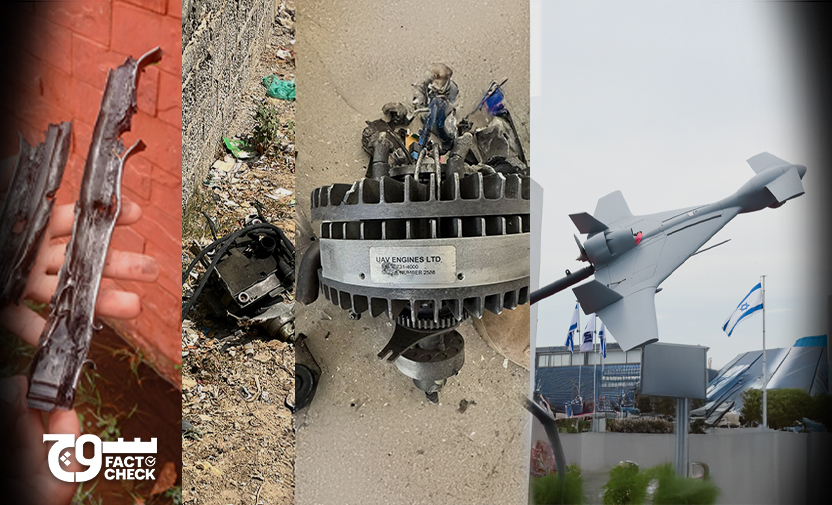
Author and researcher: Anisa Shabir
Editors: Zainab Husain and Sarah Fariduddin
Reporters: Areeba Fatima and Haseeem uz Zaman (Karachi), Aqeedat Chishti (Lahore), and Ibrahim Zauq (Islamabad)
Photographer: Umar Akhtar (Karachi)
On 10 May, Pakistan and India announced a ceasefire after the most expansive military action between the two nuclear nations in decades.
Two days before, on the morning of 8 May, India launched a wave of drone attacks, killing at least one person, and wounding several. The Pakistan military initially claimed that 25 Indian drones were shot down in different locations across the country, and the following day claimed that the number of drones shot down had grown to 77.
At this time, Soch Fact Check has not been able to independently verify the exact number of Indian drones that entered Pakistan, and how many of them crashed or were shot down.
However, our team visited six locations where drones crashed– two in Karachi, two in Rawalpindi, and two in Lahore.
Further, an analysis of remnants of two drones found on site in Karachi and Lahore suggests that they were Israeli-made Harop drones.
Indian authorities claimed that the drone attacks were in response to a Pakistani attack on Amritsar the previous night, whereas Pakistan denied that any attacks had been carried out. Subsequent to the drone attacks on Pakistan, India said that Pakistan carried out missile and drone attacks on Jammu in Indian-administered Kashmir. Pakistan also denied this allegation, adding that it was “entirely unfounded, politically motivated, and part of a reckless propaganda campaign aimed at maligning Pakistan.”
Karachi crash sites
Location 1: Malir region
A drone was purportedly shot down in the Malir region, hitting a residential building at coordinates 24.861588745937958, 67.16415916126041. Precisely at this location, locals heard an explosion, and debris and fragments of a drone were found. Satellite imagery shows that this is a densely populated area.
Faizan, whose house was hit, told Soch that the crash took place around 9:45 am. “Something drone-like hit, and there was a blast when it hit the roof. Everything shook, and everyone ran outside. There was smoke all around. Its [drone’s] parts spread across a big area, and God saved us all.”
Another resident, Mohammad Tahir, said that people were prevented from entering the building until security forces arrived and gathered evidence. “The army came, checked on the roof, took the wiring and the device… There was a big missile-type looking thing, and they took that too.”
The visual below shows an aerial and side angle of the building hit by the drone.
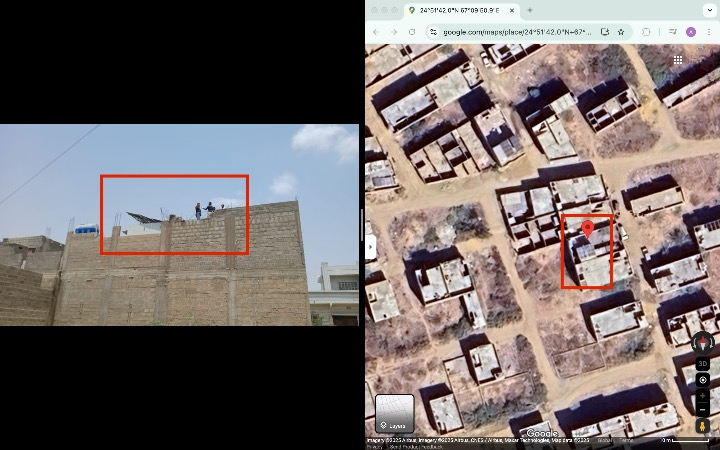
On the left is an image of the area where the drone debris struck the building. On the right is the location on Google Maps.
News reports quoting the Pakistani military indicated that the shot-down flying objects were unmanned aerial vehicles (UAVs), likely Israeli-made Harop drones.
However, besides using the military’s statement, the reports did not independently identify the model.
Once launched from a holding area, this drone can loiter in an area to gather intelligence, according to Israeli Aerospace Industries. After finding its target, it detonates itself on it. More importantly, it has not been verified if some of these drones were able to attack their targets.
Soch Fact Check found drone remnants at the crash site and took several images for analysis. Ten photos of fragments, three of them shown below, were sent to a munitions expert for analysis:
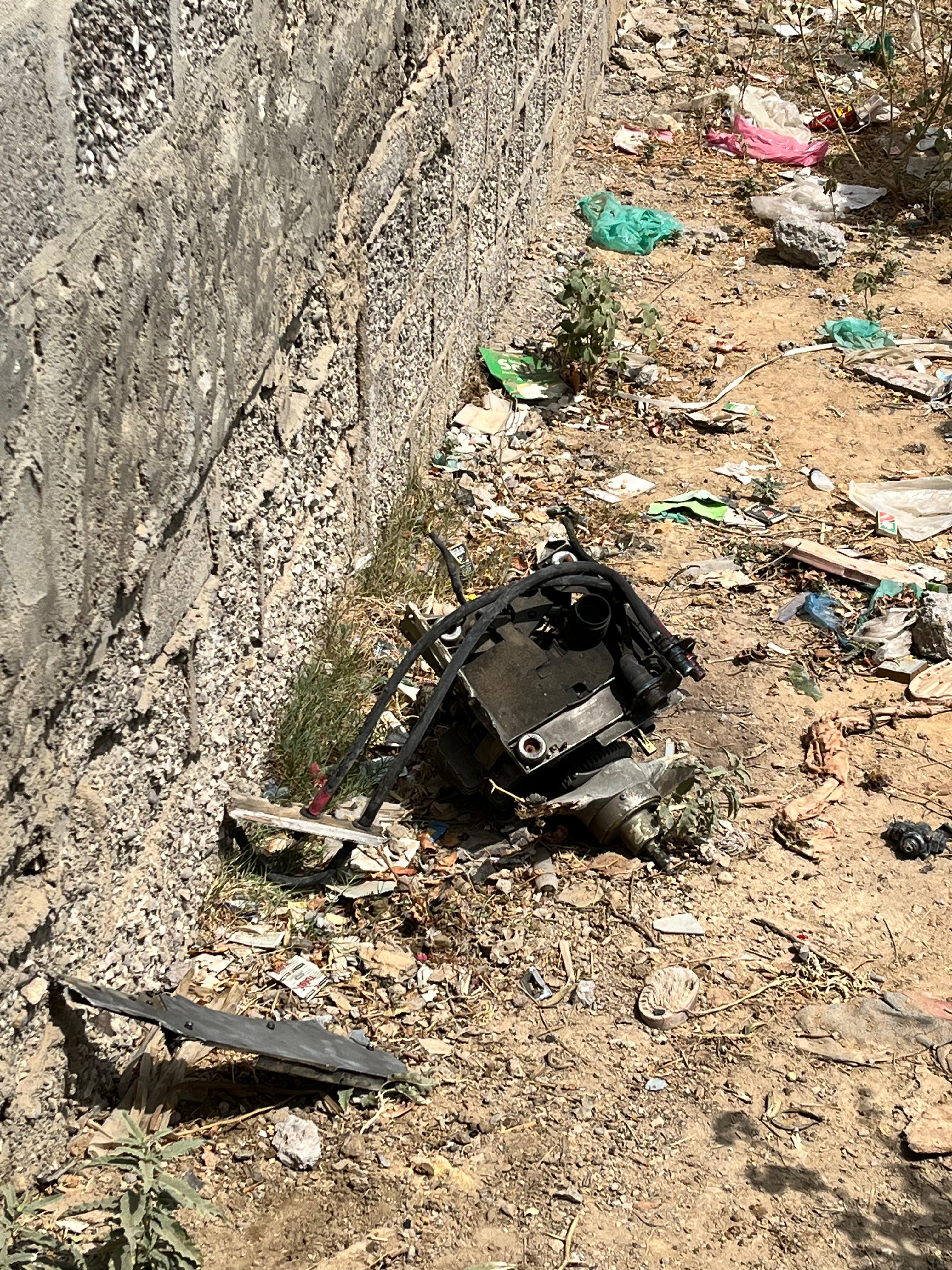
Drone fragment found in the Malir region.
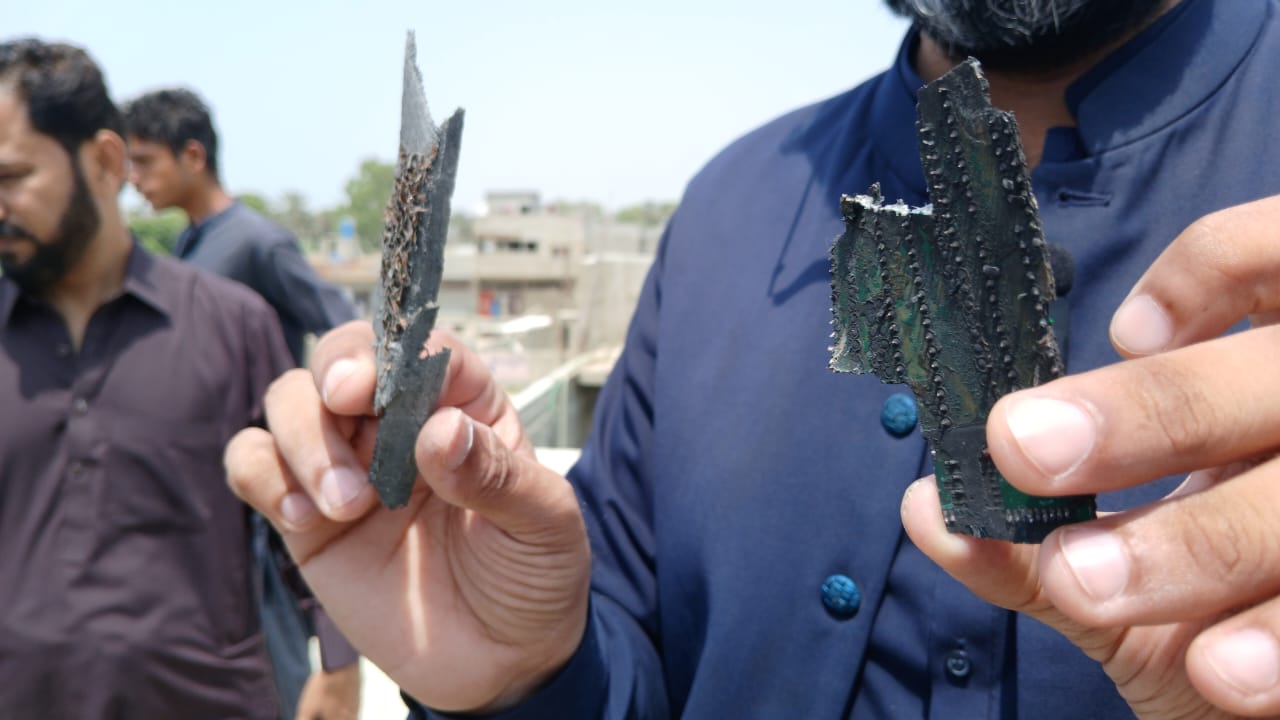
Drone remnant in Malir region.

Drone remnant from the first site in Karachi.
Trevor Ball, an associate researcher at Armament Research Services, a consultancy firm specialising in munitions research, identified the drone debris shown in the first image from the crash site. It’s “likely an Israeli-manufactured Harop drone. This engine is consistent with it and there has been a lot of remnants from them from the [recent] Indian strikes,” he said.
The remaining fragments were not identifiable from the crash site due to damage. Ball explained that for Harop and other similar drones, the engine is typically the part used for identification. He said that while wings and other body parts can be identified if they survive the crash, it is difficult to identify them positively as their production varies by country and can have different models.
Further, much of the information is not publicly available, he added.
Location 2: Near Gulshan-e-Hadeed
The second crash site, near Gulshan-e-Hadeed, is approximately at coordinates 24.92046250192966, 67.36991480936595.
Media and reporters were not able to take footage of the debris as it was immediately removed from the site by the Pakistani military, SHO Steel Town Allan Khan Abbasi told Soch. He also confirmed that a drone did, indeed, crash at this location, adding that it is a remote area, far from more populated parts of the city.
Rawalpindi crash sites
Location 1: Near Rawalpindi Cricket Stadium
Soch Fact Check also visited two crash sites in Rawalpindi, the capital’s twin city.
The first location, near the Rawalpindi Cricket Stadium, is at coordinates 33.65197270434399, 73.07701569826457. Verified footage shows that civilians from the area gathered at the gate leading into the stadium, which was restricted to the public after the drone fell.
This stadium is located in a busy, commercial area surrounded by local restaurants.

Screengrab from footage shot by our reporter showing the stadium.
“I saw something in the air, destroyed and on fire, shaking and falling to the ground,” said Affan Akhtar, a resident who witnessed a flying object fall from the sky. He felt, based on the specific noise, that it came from a lighter flying object like a drone rather than a jet.
Though it was restricted, footage from inside the gated area soon appeared online, showing damage to the Saffron restaurant near the stadium, particularly to its windows. Soch verified this footage by geolocating it to the exact coordinates 33.65190779437297, 73.07707891075552, which also corresponds with eyewitness statements about the location. Shortly before this article was published, a CNN reporter also visited the area, and the visuals he captured match our findings.
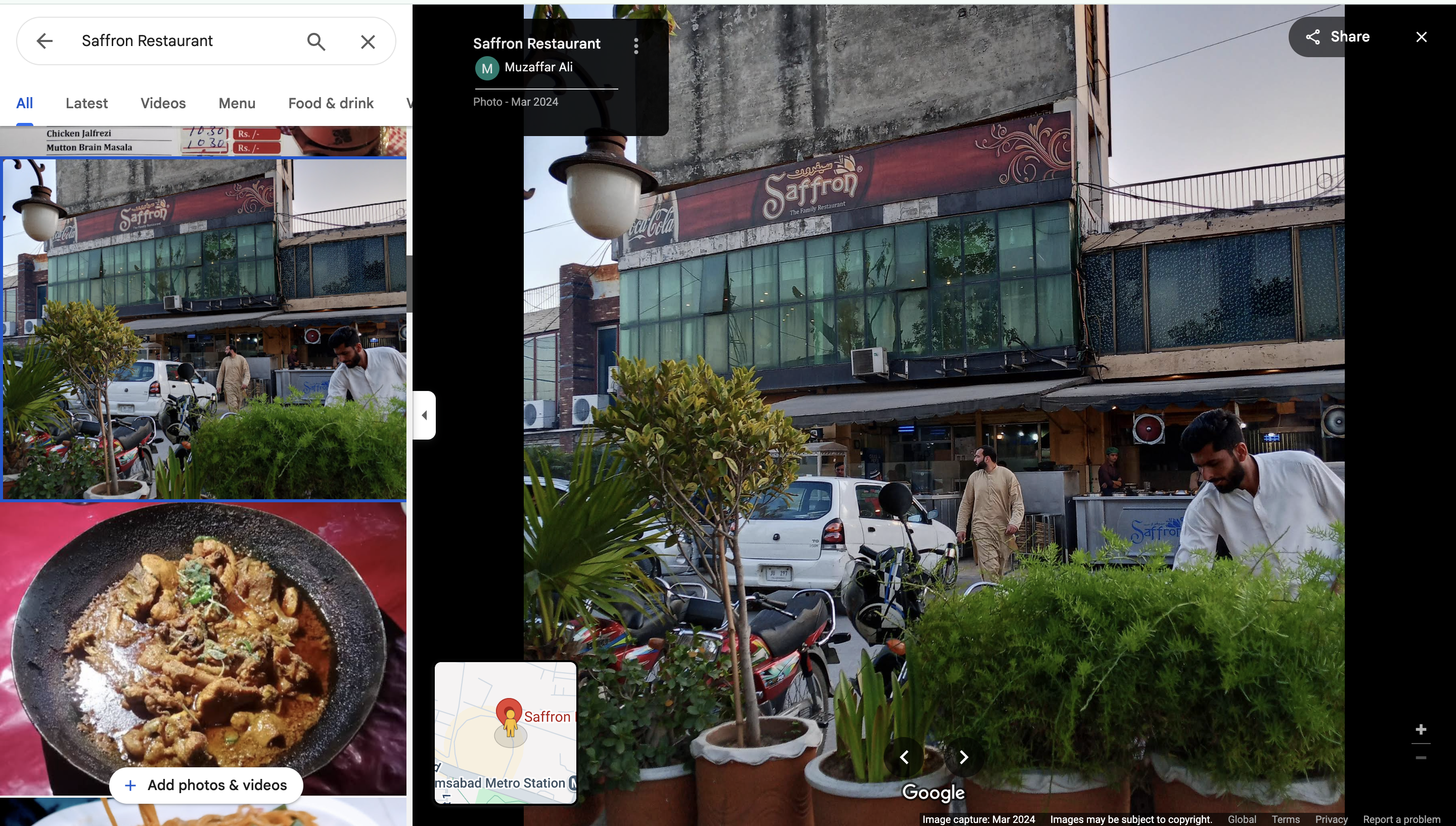
Image of Saffron from Google Maps.
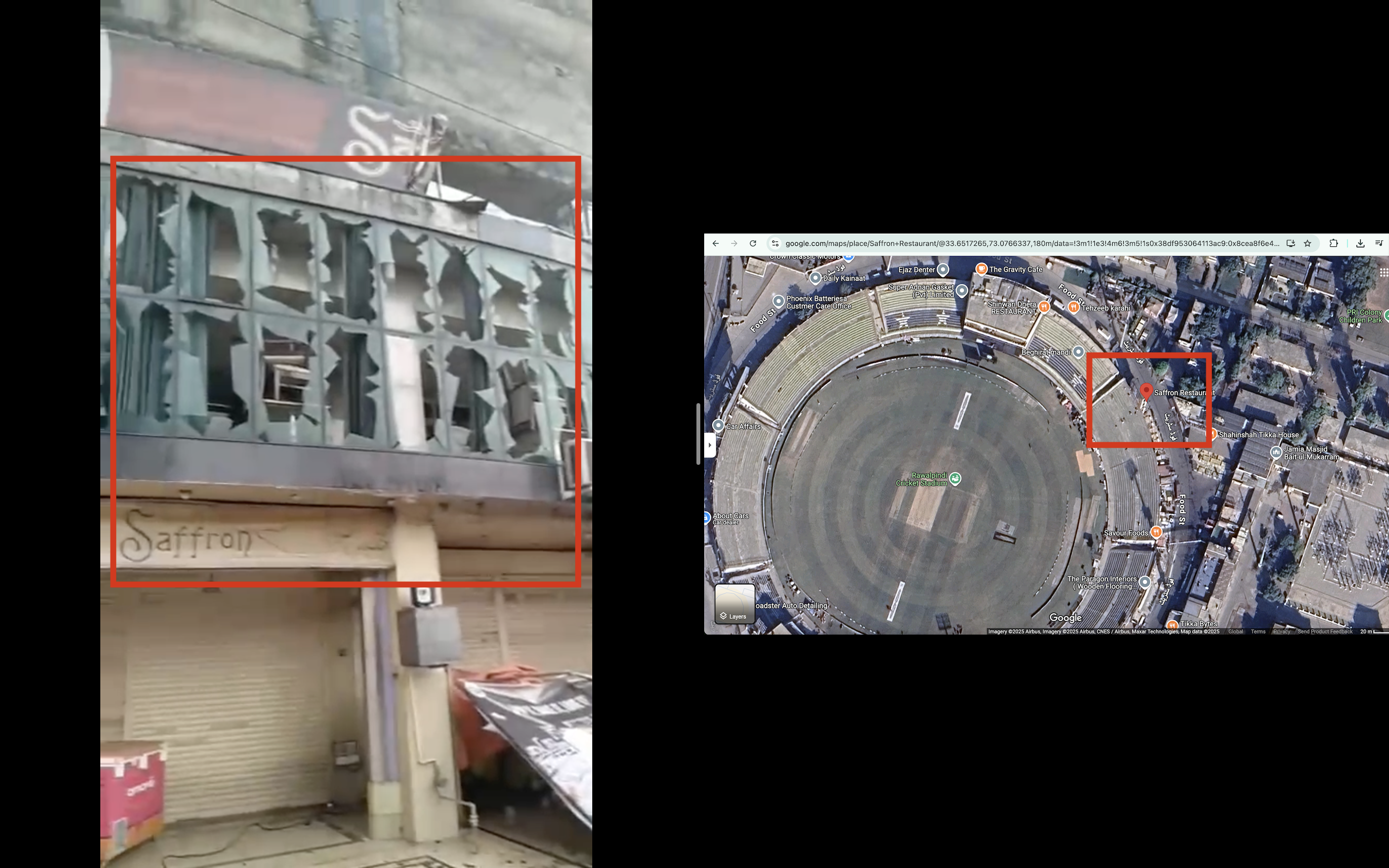
Geolocation of footage showing damage to Saffron restaurant.
Location 2: near Raja Akram Road
Soch also found that another drone in Rawalpindi crashed at approximately 33.602381681073304, 73.03967868219196, on or possibly near Raja Akram Road. It lies within the Rawalpindi cantonment, and is a densely populated residential area.
This site was restricted to civilians who are not residents of the area, so reporters could not take footage of the debris.
Soch’s reporter, who visited the area, was told by army personnel standing near the restricted area that a drone had hit the solar panels of a building located near the above coordinates.
Moreover, an employee at the Race Course Nursery, at coordinates 33.60372242503744, 73.03885507269322, said he heard a loud explosion at 10 am. He found the debris of the solar panel near this nursery, which he shared with the reporter:
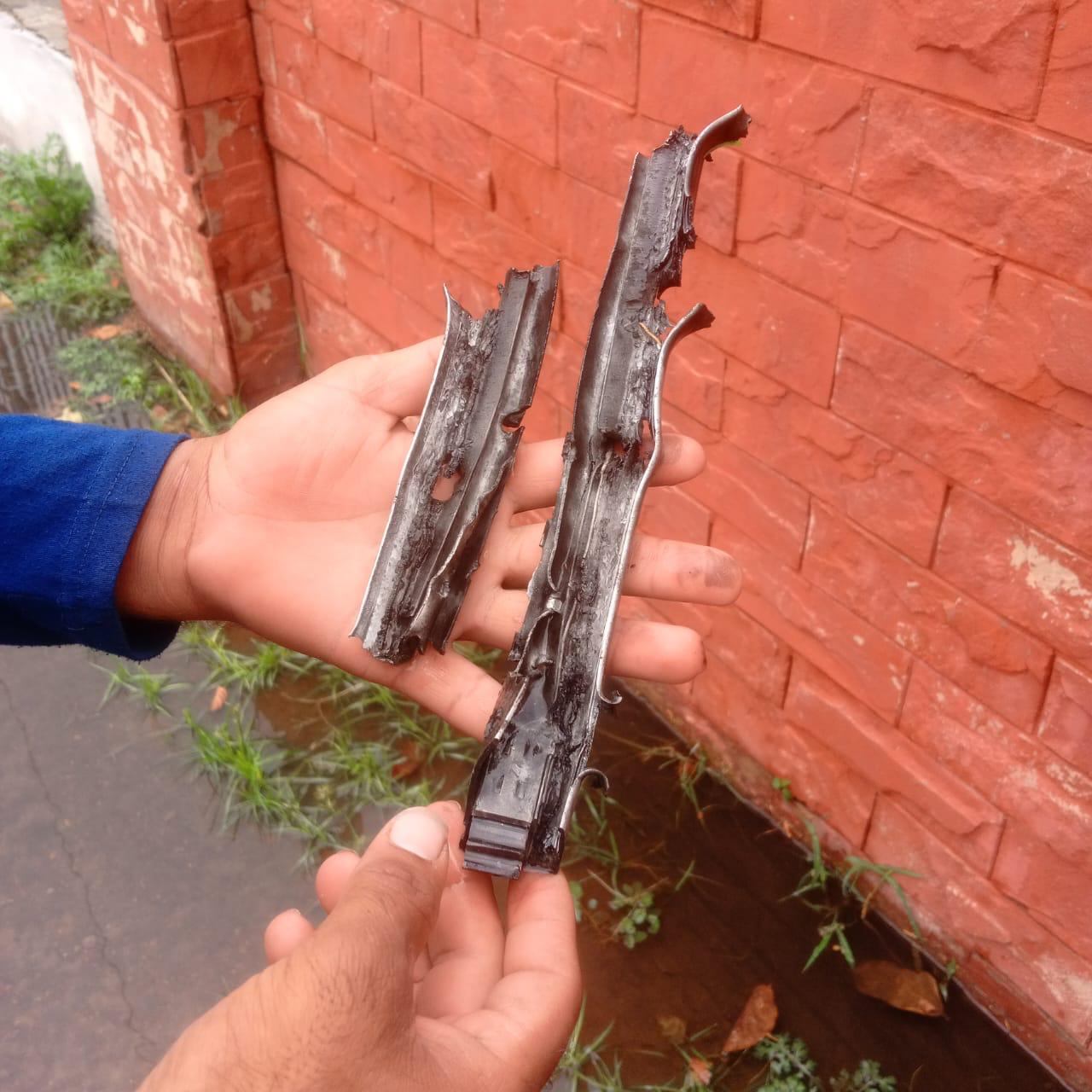
Debris from a solar panel was found near the nursery.
The visual below provides an overview of the incident. The blue circle shows the Race Course Nursery where the employee found a remnant from the solar panel, which was hit in the estimated crash site highlighted in red.
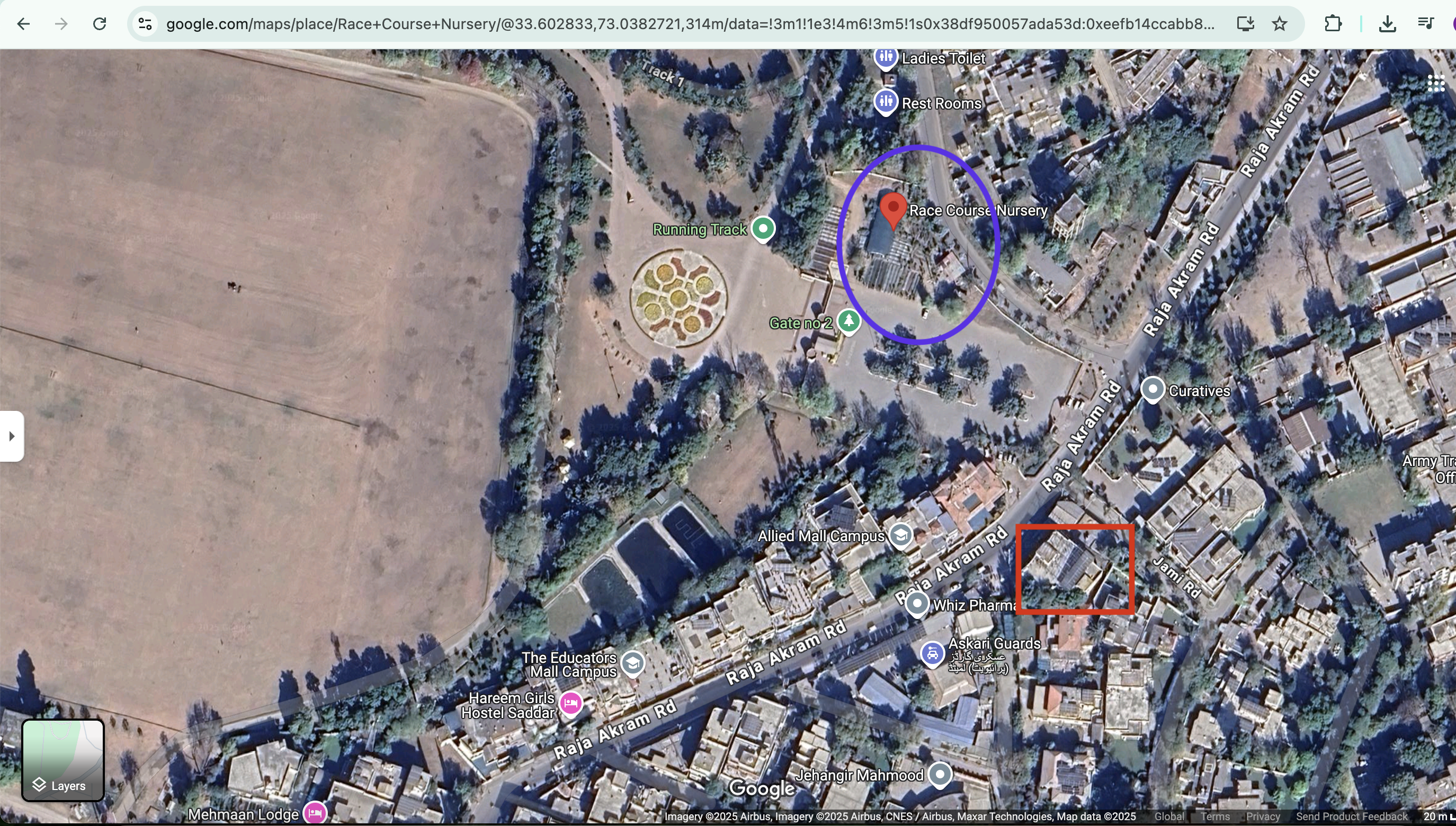
An overview of the incident near the second site in Rawalpindi.
Update: On 15 May, this article was updated to mention that the location of the crash site was confirmed to Soch’s reporter by army personnel stationed near the restricted area.
Lahore crash sites
According to Dawn, at least three crash sites were identified in Lahore. Soch visited and independently verified the incident at two of these locations.
Location 1: Walton
At around 6:42 am, residents said they heard an explosion and saw smoke rising from the impact of a crashing drone near Askari V Street (31.49837080295892, 74.33893623840764), which is located near Walton Road in Lahore. Many residential complexes and community buildings are situated on this road.
This area was also restricted to reporters, who could not get footage of the drone debris from the crash site.

Image sourced from X.
However, images sourced from X here, here, and here suggest a drone fragment was found in the Walton area.
Photos of the same drone debris, carried by The Friday Times and Dawn, further confirm that it was likely found at this site.
After this photo emerged on X on 8 May, the Open Source Munitions Portal (OSMP)—a tool created and maintained by Airwars and Armament Research Services—posted an image of the “AR731 Wankel engine used to power Israeli-made Harop munitions.” It stated that this matches the debris image from Walton, which is “remnants reportedly found after alleged Indian strikes inside Pakistan appear to match images of Harop one-way attack (OWA) drones in the OSMP.”
A comprehensive entry of this munition can be found here. A side-by-side comparison of the OSMP entry and the images of the fragment found in Walton, Lahore, is shown below, suggesting that the drone is likely an Israeli-made Harop:
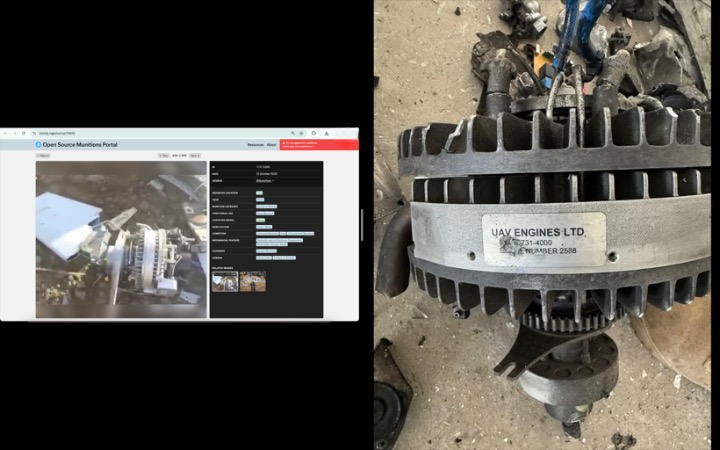
A side-by-side comparison of the munition entry by OSMP with a drone fragment from Walton, Lahore.
Site 2: Jallo Park, Lahore
Around 8:30 am, Soch’s reporter in Jallo heard sirens, followed by “a blasting sound” that indicated a drone was shot down.
The estimated coordinates for the location of the crash site are 31.575254464789992, 74.48383028722729, surrounded by fields as well as residential areas.
The military also restricted this site as they deployed artillery, a security guard told Soch. Therefore, our reporter could not take footage of the drone debris or the damage caused by the drone crash.
Since a ceasefire was announced on 10 May, military tensions have continued along the Line of Control, with India and Pakistan blaming each other. US president Trump, who Pakistan says brokered the ceasefire, has offered to work with both South Asian nations to find a ‘solution’ regarding Kashmir. While Islamabad has welcomed this offer, New Delhi has so far continued to refuse international mediation on the Kashmir dispute, as has been their policy for decades.
In a statement on 11 May, Pakistan’s foreign office says the nation is, “committed to engaging with the United States and the international community in efforts to promote peace, security, and prosperity in the region.”
Cover photo was designed by Mashhood Jafri.
